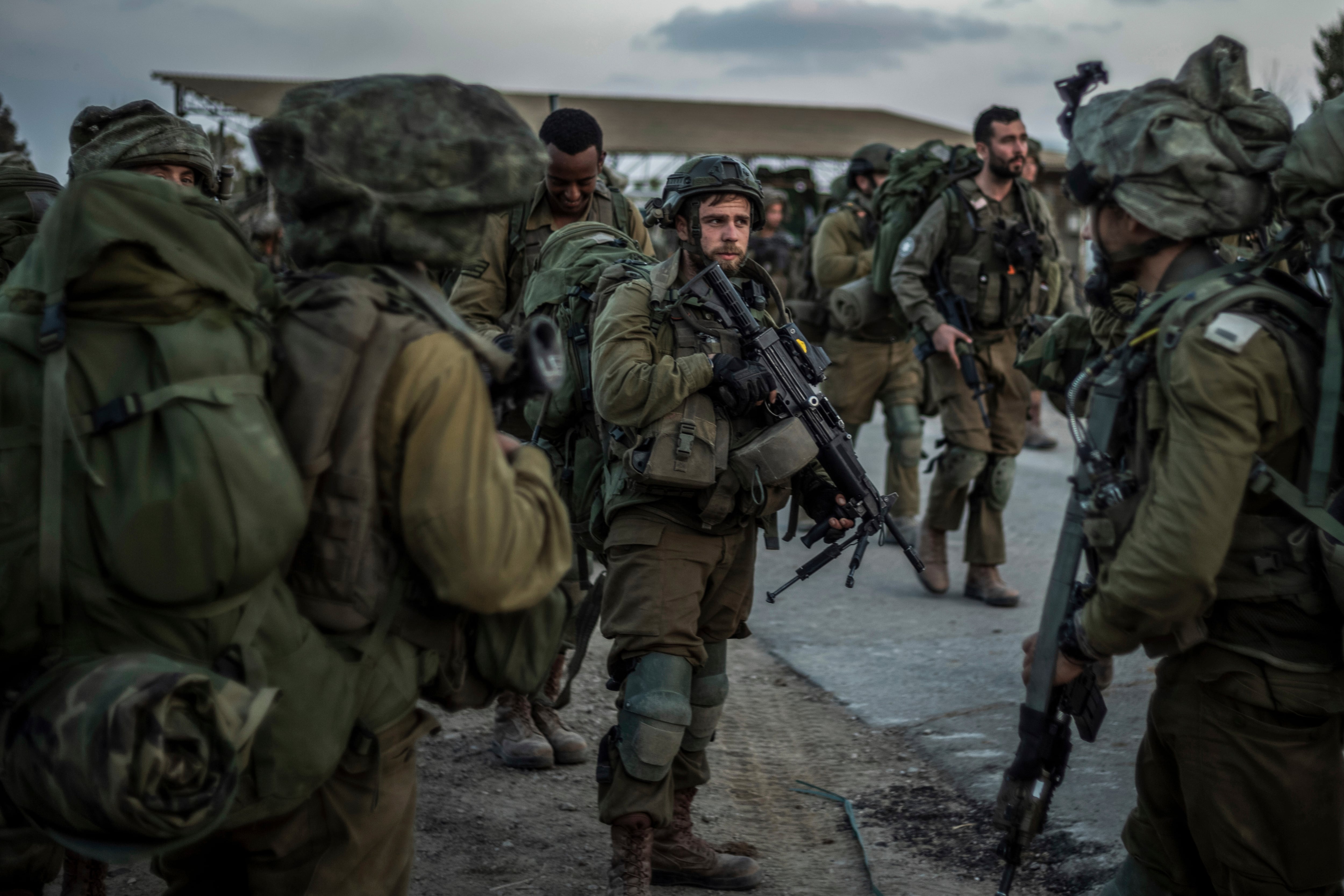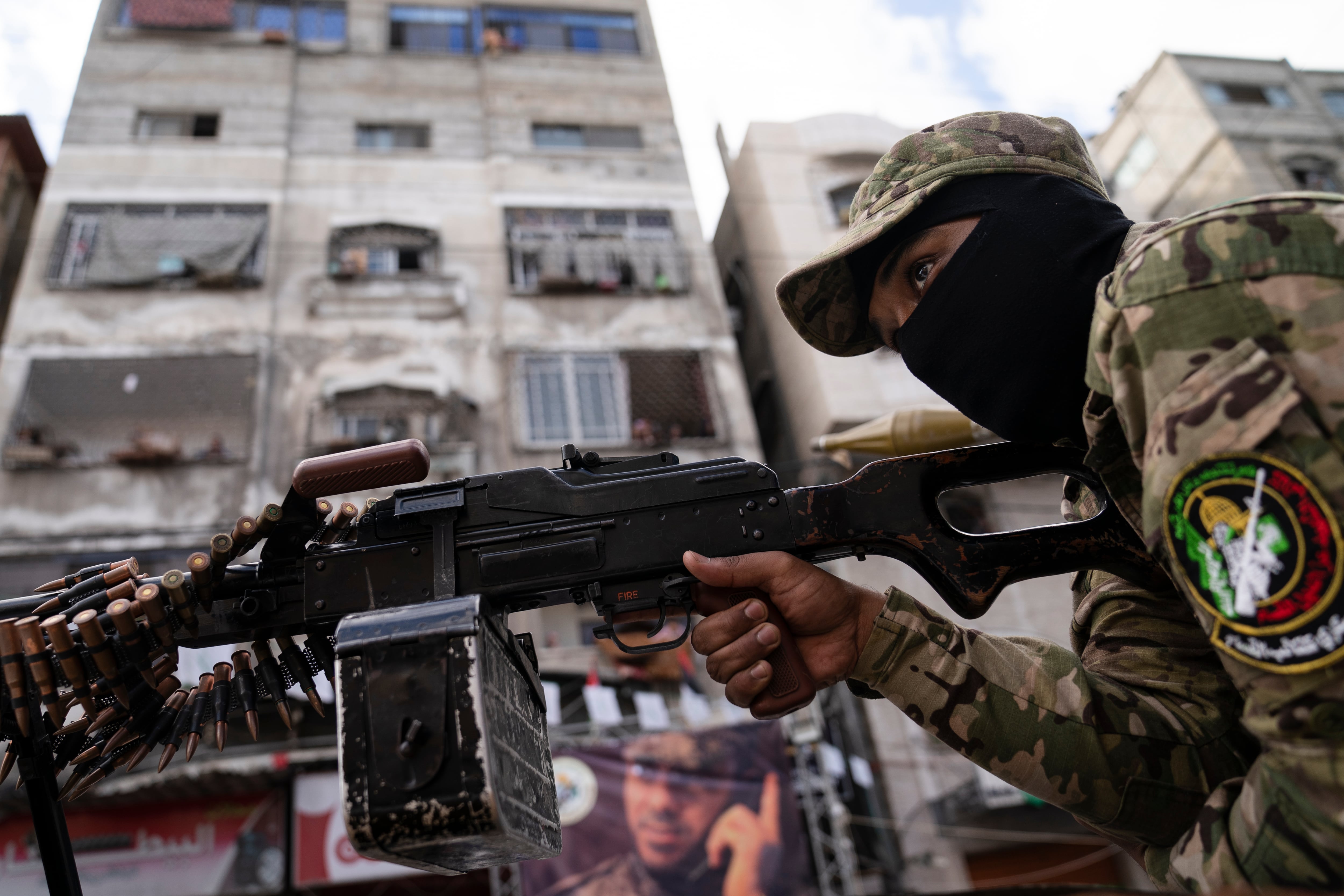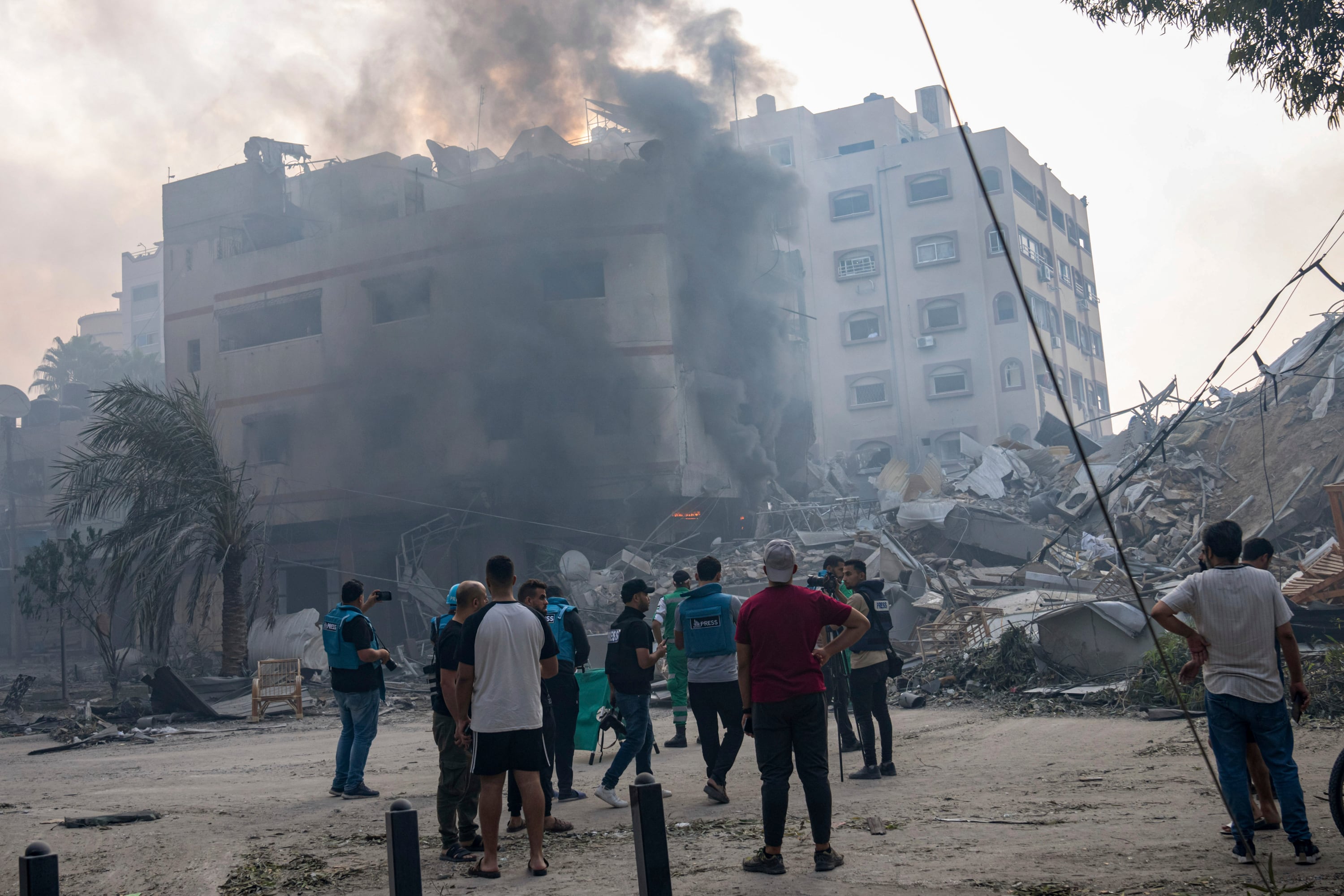As the Israeli military continues striking targets inside Gaza following the Oct. 7 attacks by Hamas that killed an estimated 1,400 in Israel and resulted in another 200 being taken hostage, the specter of a large-scale ground offensive into the densely populated area of northern Gaza looms.
The Israeli Defense Forces says it has mobilized 360,000 reserve troops. Its leaders have told Gaza residents to evacuate the northern area and called for the complete destruction of the militant group Hamas.
Urban fighting of any kind presents a host of unique tactical challenges for both sides and devastating consequences for civilians caught in its midst.
The U.S. military largely has played a support role in some of the more recent, significant urban battles, such as the nine-month Battle of Mosul in 2016–2017 in Iraq; the five-month Siege of Marawi, Philippines, and the four-month Battle of Raqqa, Syria, both in 2017; and a variety of urban battles through the ongoing Russian war with Ukraine.
During the Iraq War, the United States slogged through its own urban fights in Baghdad, Fallujah, Sadr City and elsewhere in Iraq.
That sample of recent urban combat has shown monthslong fights have caused billions in damage, and left thousands dead and many more wounded.
Estimates from Mosul, Iraq, alone — a likely comparison for what may happen in Gaza, according to multiple experts — suggest that more than 1,000 coalition forces died. And official estimates for Islamic State fighters killed range between 7,700 people to more than 16,000 people.
The entirety of Gaza spans an area approximately the size of Washington, D.C., and contains a population of more than 2 million residents. North Gaza and Gaza City combined hold more than half of the area’s residents.
If the tolls of dead, wounded and widespread destruction from other urban battles is any kind of indicator, a prolonged ground operation in Gaza likely is to produce as much or more carnage, experts said.
“Israel has not fought something on this scale in quite some time,” said Raphael Cohen, a senior political scientist at Rand and an Iraq War veteran. “This is already one of the more bloody conflicts in its history and it’s only going to get bloodier.”
Some aspects of urban combat remain the same, regardless of the era or region. Buildings, tunnels and other obstacles hide defenders, rubble impedes vehicles and provides ample opportunities for booby traps, civilians who remain pose a challenge to forces intent on reducing casualties.
The presence of civilians also provides fighters a way to blend into the population. Every inch of territory gained consumes more ammunition, supplies and by its intense nature, creates higher casualty counts, requiring more troops than an operation in any other terrain.
In the desert, troops usually can see the enemy coming and can maneuver with ease. Forests, jungles and mountains strain equipment and logistics, taxing mobility. But a city is a whole other matter.
“The worst possible set of circumstances is a city,” said Dakota Wood, a retired Marine lieutenant colonel who is now a senior research fellow for the Heritage Foundation, a Washington, D.C., conservative think tank.
Urban terrain can blunt, but not entirely eliminate, the advantages of a modern military force.
“It’s three dimensional: underground areas, shopping centers, sewage lines, tunnels, below-ground parking and basement areas,” Wood said.
The “urban canyons” created by high-rise buildings, the warren of alleyways, roads and other obstacles constrain movement.
Of all the militaries in the world, some experts say Israel is the best trained, equipped and positioned for fighting an urban campaign.
And it will still be hell on everyone involved.
Urban offense and defense
The Israeli Defense Forces concentrate their manning, equipping and training efforts on defending Israel, and as such can specialize a force in ways expeditionary forces, like those in the U.S. military, could not.
That means a range of specialized units purpose-built for going after the massive tunnel networks used by Hamas in Gaza and a series of brigades that are infantry and armor-heavy, with advanced cyber and electromagnetic warfare capabilities.
While the Israeli Defense Forces has not conducted major ground offensives into the heart of Gaza since it ended its nearly 40-year occupation of the territory in 2005, the force has commanders in its ranks who’ve fought in those territories and studied them for years, said John Spencer, author of “Understanding Urban Warfare,” and chair of Urban Warfare Studies at the Madison Policy Forum foundation in New York.

Spencer outlined some of the strengths that the Israeli Defense Forces brings to such a fight in a recent series of podcasts and articles on the Urban Warfare Project at the Modern War Institute at West Point, New York. According to him, for Israeli Defense Forces units, equipment and tactics strengths include:
- Yahalom Unit: a specialized Israeli Defense Forces combat engineering corps commando unit trained to find, clear and destroy tunnels. The unit is one of the largest in the world focused on underground warfare.
- The Yahalom carries a toolkit of specialized gear for such operations, including ground and aerial sensors, ground-penetrating radar, drilling equipment, radios and navigation equipment designed for use underground, thermal equipment and a suite of flying and ground robots for mapping tunnels. Once discovered, the unit has ground-penetrating munitions such as the GBU-28, which can penetrate 100 feet of soil or 20 feet of concrete.
- Oketz: a canine unit with dogs trained for underground operations.
- Intelligence units Sayeret Matkal, the Yamam and others who study and share best practices for handling underground threats.
- Tunnel training is included in basic infantry training for nearly all combat arms Israeli Defense Forces troops.
- Remote-controlled bulldozers: a combination of explosives, bulldozers and tanks are sometimes the most effective means for destroying or sealing off tunnel entrances.
Spencer, a career Army infantry officer and veteran of the Battle of Sadr City, Iraq, told Military Times that those Israeli Defense Forces advantages will help, but the urban terrain favors the defender.
Weaker enemies such as terrorist organizations or guerilla fighters can find refuge in urban terrain that they know well. Hamas has used Gaza as a base of operations nearly from its inception in 1987.
The group, designated as a foreign terrorist organization by the United States in 1997, largely has controlled Gaza since it won the 2006 elections for the Palestinian Legislative Council.
That has given the group time to reinforce its urban centers for just such a battle that the group could soon face.
Experts said those preparations include major factors Hamas is likely to exploit — rockets, tunnels, strongpoints, human shields and time.
Hamas has used its own drones and given its alliance with the Iranian military, which has supported the Russian invasion of Ukraine, Hamas is learning battlefield lessons from that fight as well, said Cohen, the Rand expert.
Cohen co-authored a 2017 Rand report titled, “From Cast Lead to Protective Edge: Lessons from Israel’s Wars in Gaza,” which offered a series of urban combat lessons learned for the military audience.
Rand Gaza Report high-priority recommendations for the U.S. military:
- Understand the adversary.
- Understand the limits of precision targeting in the urban context.
- Develop and field rocket and missile defenses.
- Invest in active protection systems and armored vehicles.
- Prepare for tunnel fighting.
Rocket fire has been the primary means Hamas and other groups, such as Hezbollah, have used to attack Israel over the years.
But unlike conventional military attacks where rockets are arranged in various areas of the battle space, often in view of drones or aircraft, the combination of tunnels and rockets gives Hamas ways to strike and move rapidly without detection, said Jacob Stoil, associate professor of military history and Israel Defense Forces researcher at the U.S. Army School of Advanced Military Studies, told Spencer on an Oct. 13 episode of the Urban Warfare Project podcast.
An ongoing Hamas tactic has been the use of human shields.
“Attempting to avoid inadvertent Palestinian civilian casualties is a vital but admittedly difficult task for the Israel Defense Forces, considering the dense urban environment of Gaza where Hamas and other militant groups frequently use Palestinian civilians as human shields,” said Bradley Bowman, senior director of the Center on Military and Political Power at the Foundation for Defense of Democracies.

Much of the infrastructure such as schools, hospitals and mosques, have been dual-purposed with Hamas command and control, observation and firing positions, Spencer and Stoil said.
Such buildings can often weather missile strikes better than residential or commercial buildings and the presence of civilians can sometimes deter such strikes entirely, Spencer said.
In military language, those buildings function as “strongpoints,” and, Spencer noted, such locations, if not destroyed, require a lot of manpower and resources to take.
During recent conflicts such as the 2017 Siege of Marawi, Philippines, or battles in Ukraine, a single strongpoint has sometimes taken weeks or months to clear.
The aftermath of strikes, such as those now underway by the Israel Defense Forces in Gaza, create their own terrain feature: rubble.
“As soon as you blow something up that rubble creates additional obstacles to movement,” Wood, the Marine veteran, said. “You cannot rush in. You don’t move quickly through that environment at all.”
Ground troops are forced to scramble over broken and jagged chunks of concrete and steel, going on foot because the debris slows or stalls vehicle movement.
That puts those soldiers and their vehicles at risk from another threat: booby traps.
Ozzie Martinez Jr. saw that firsthand when he deployed as an amphibious track vehicle crewman during the First Battle of Fallujah, Iraq, in 2004.
While running vehicle patrols as a Marine lance corporal at the time, Martinez recalled how troops would put metal posts like those used for street signs on their vehicles to catch piano wire strung across roads to tangle or ensnare vehicle gunners.
The buildings themselves become a maze of threats.
“We were standing in front of one house getting shot at by a group of guys,” he said. “Then, four houses down we’re getting shot at by what looks like the same group of guys.”
Insurgents in Fallujah, Iraq, and other urban battles would often punch “mouse holes” through building walls, connecting the buildings to move quickly from one shooting position to another, all concealed by the building walls.
Martinez noted the psychological toll of relentless urban fighting.
Some fellow Marines simply went into shock and seemed frozen for days.
“It’s almost like you absorb it and go and get used to riding on the edge of the seat,” Martinez said. “It’s the intensity, you’re not getting out of it…there’s no time out.”
All of Hamas’ defenses, from small drones strapped with grenades, to suicide bomber attacks, to rockets hidden in tunnels until they’re ready to be used, and human shields are designed to work toward one goal: buying time.
In past Israel Defense Forces operations in Gaza and other areas, as casualties mounted and the toll on civilians rose, outside pressure often ended the operation. Spencer, who has traveled to areas of Israel alongside Israel Defense Forces personnel, said the time factor has played a role even in planning such operations.
The duration of major Israeli operations against militant groups in Gaza since 2005:
- 2008–2009: 23 days
- 2012: 8 days
- 2014: 50 days
- 2021: 11 days
Source: Al Jazeera
But this time may be different.
In past operations, Israel’s stated objective in Gaza was to “mow the grass,” a term used by Israel Defense Forces leadership that refers to periodic strikes that targeted Hamas leadership and military supply chains.
“That’s no longer the case today,” Cohen said.
In the past, those strikes would unfold and within days or weeks. Then, following international pressure, there would be a ceasefire.
“That’s going to have less likely of an effect than previously,” Cohen said.
That in turn means that a methodical campaign to root out and destroy Hamas in Gaza will likely proceed until its completion, the experts said.
But Gaza is not a far-off outpost for Israel.
What happens after the shooting stops and the dust settles is the biggest unknown of them all. None of the experts interviewed by Military Times had an answer.
“I can tell you exactly how a military operation will go. I cannot tell you what will happen the day after,” Spencer said.
Todd South has written about crime, courts, government and the military for multiple publications since 2004 and was named a 2014 Pulitzer finalist for a co-written project on witness intimidation. Todd is a Marine veteran of the Iraq War.





